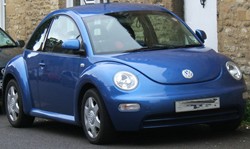Retro marketing

Retro marketing is about using nostalgia for the past to make a modern product attractive. Retro marketing involves creating a brand identity based on heritage or nostalgia for a company's past products. Retro marketing can change the product itself, to make it look old fashioned. The new BMW Mini, and more recently, the Fiat 500 are modern cars styled to look like they came from the 60s. Sometimes retro products can be a re-issue or replica of an old product, such as Cadbury's relaunch of the Wispa bar.
Today, retro has a strong influence on almost all aspects of retail. Retro can draw from any past decade to create a new perspective on an old look. We have rediscovered Art Deco, the juke box styling of the 50s, flower power from the 60s, modern furniture and design from the 50s and 60s, flared trousers from the 70s and cars from the 60s.
What characterises a retro product? Why is heritage important in marketing? Why is retro nothing new? How does the internet encourage retro? Is retro here to stay?
What is a retro product?
There are two kinds of retro product. The first is a genuine re-issue or replica of an original product from the past. The other is a modern product that adopts retro styling to make it look and feel different from similar products.
Genuine retro products
The Morgan Sports Car is a genuine retro product. It is made in the same style and to the same exacting standards since the 1930s. Engines have changed, as have interior details, but the cars are still built in the traditional way on an ash wood frame.
The Bialetti Moka Express Coffee Maker is stamped on the base 'since 1933'. It has been used to brew the perfect Italian espresso for over seventy years. The Mont Blanc Fountain Pen, a potent status symbol in the 80s, is a retro product. It exudes old fashioned quality. Ray-Ban Aviator sunglasses, dating from 1937, are pretty much the same as when General Douglas McArthur liberated the Philippines wearing pair.
Other genuine retro products are those the manufacturer has brought back after a period of absence. The most recent high profile 'bring it back' retro product was Cadbury's Wispa. Wispa was launched in 1981. It was a chocolate bar with 'melt in the mouth bubbles'. Cadbury's hoped to take a bite (pardon the pun) of Nestle's market share for Aero. Wispa was hugely successful in the 80s. However, a re-organisation of Cadbury's product range in 2003 saw Wispa dropped.
Fans of Wispa were convinced it was the only chocolate bar and a successful internet campaign on Facebook, Bebo and MySpace persuaded Cadbury to bring Wispa back for a short test period, which was so successful that the Wispa bar is now back permanently. Cadbury is now also relaunching Wispa Gold, originally marketed in 1995; this is a breathtakingly short period from original product introduction to nostalgic revival.
Retro products are more likely to be a modern rebirth of an old, but not forgotten, product from the past.
Modern retro products
The modern retro product is modern in functionality, but old in look and feel. It is a compromise, an antique that performs as well as a modern product. The retro appeal is less about quality and more about style with a large dose of fun added.
Retro products give us the past we remember, or don't remember, without the drawbacks. Retro radios don't crackle; retro cars don't need careful maintenance or double declutching.
The Roberts Revival 250 looks and feels like a radio from the 50s. However, it has modern electronics and there are digital versions available. Roberts also makes some fantastic sixties' style versions in psychedelic rainbow patterns. They are a retro 60s' take on a retro 50s product. Confused? Roberts never made these sets in the sixties and most hippies would have had pocket transistors from Japan. However, they look great, so why should we worry?
Radio sets score well in the retro world. There are also two from Bush, the TR82, which is a replica of the TR82 from the 60s, but with FM, and the TR130 replica from 1966. Both are accurate reproductions from the outside, but with modern electronics.
From the manufacturer's point of view, retro style is a way to differentiate the product. When it is assumed that most radios work reliably, a retro style can be a valid reason for customer choice.
Retro cameras
The latest shiny, new retro product is the Olympus E-P1. This new camera from Olympus takes the philosophy and styling of the original Olympus Pen from the sixties. It adds modern digital technology to create an advanced modern camera, but with the look and feel of the original Olympus Pen. It looks a great piece of retro packaging.
Radios, chocolates and cameras are small products, but can retro work in a large purchase like a car? The answer is yes, but manufacturers were slow to catch on.
Retro cars

Retro cars did not exist until the late 1990s. Styling fads, such as fins and chrome, always played a part in automotive design, but there was no attempt to use the past as a styling technique.
One of the first retro cars capitalised on the 70s love of the 30s. The Panther DeVille recreated the look of the Bugatti Royale, from 1930. However, like the original, the Panther was an exclusive and expensive product.
The first retro car by a volume manufacturer was the Nissan Figaro, introduced in 1989. The Nissan Figaro was a two door sports coupe based on a Nissan Micra chassis, but with styling straight out of the 50s.
The Nissan Figaro was a limited production run for the Japanese market only. However, the Nissan Figaro proved there was a market for modern retro styled cars. The next big leap backwards came just before the turn of the 21st century, when Volkswagen announced the new VW Beetle and a year later BMW started making the new Mini.
Both these cars were modern vehicles clothed in retro bodywork. You could drive either of these cars like a modern car and treat it like modern car, but it looked like it was from the past, at least at a passing glance.
Both the Beetle and Mini take styling cues from their ancestors, but do not attempt to replicate the past style entirely. Unlike the Figaro, neither looks like it could have been made in the 50s or 60s. Both have developed their own market and following of mainly young people.
These cars have carved out a strong niche market and proved that it is possible to sell a volume car that is different from what Mr or Mrs average wants to drive.
Retro is nothing new
The semi detached house from the 20s and 30s is a superb example of retro marketing. The public of the pre-war era was not ready for the hard edge lines of Art Deco, or the ultra modern look of the Bauhaus. Instead they bought into a dream of Tudor England packaged in semi detached form.
The Tudor house, complete with oak beans, leaded light windows and solid oak front doors was everyone's suburban dream.
After the War the public were much more receptive to contemporary houses and contemporary furniture. However, there was a strong liking for decorative items that were distinctively retro: fake copper kettles and warming pans, electric lamps in the style of Victorian gas lamps, a welcoming coach lamp by the front door, silver tea sets in Georgian style and ornate silver candelabras, as well as copper frying pan clocks and farmhouse style pine furniture.
Retro is nothing new. The only thing that changes is the period we look back too. There is a distinct cycle to retro. It is largely based on the regard in which we hold the decade.
For many years the 70s was thought of as the decade that taste forgot. The fashions looked over the top and out of place in the modern world of the 80s and 90s. Yet, only a few years later we eagerly rediscovered the delights of flared trousers and cheese cloth shirts. For younger people it was a new discovery. Now the 80s is back. The Rubik's Cube is fashionable and a new version tipped to be the top toy for Christmas 2009.
Retro and the internet
Paradoxically the internet has helped the spread of retro. It allows niche markets for retro products, such as reproduction 1960s telephones, that would not quite sell in enough numbers for the high street. The internet allows campaigns to bring back products from the past. Marketers can study social marketing sites for a groundswell of opinion pointing to the next revival.
Without the internet you would not be reading this article, or exploring this site, which is all about retro.
Retro and brand heritage
Company history and brand heritage is important in any retro campaign. Many companies are keen to stress their history and expertise over a long period. This is usually something more than 'we've been doing this along time, so you can trust us'.
The appeal is either a real or imagined past that conjures up images of a lost age. Sometimes there are key products that still define the brand today. Cadbury's website presents a picture of an old fashioned chocolate factory with an old style bus parked near by. There is a selection of old favourites, 'gone but not forgotten', including Amazin' Raisin, Aztec, Boost and Old Jamaica. Ben Sherman revels in its past as the favourite brand of Mods and Skinheads. Samonsite's website includes a discussion of the Company's landmark luggage designs.
Retro is here to stay
Many thought retro would be a passing fad. The evidence is that retro is here to stay. Each new generation discovers something it wants to rediscover and reinvent from the previous generation.
The fifties' revival began as early as the beginning of the 70s. The eighties' revival is going on now; the 90s cannot be far behind.
There is nothing that great about the present. There is a looming economic crisis; the prospect of global warming seems ever greater. Nostalgia has always had its greatest influence when the present looks less promising. Retro is here to stay.
More on retro marketing
Marketing - The Retro Revolution by Professor Stephen Brown, right, is the only textbook I could find about retro marketing. It sets out the use of retro in marketing from P T Barnum to the present day. Nostalgia is nothing new. Apart from a brief interlude in the 50s and 60s when Theo Levitt's modern marketing ideas held sway.


Comments